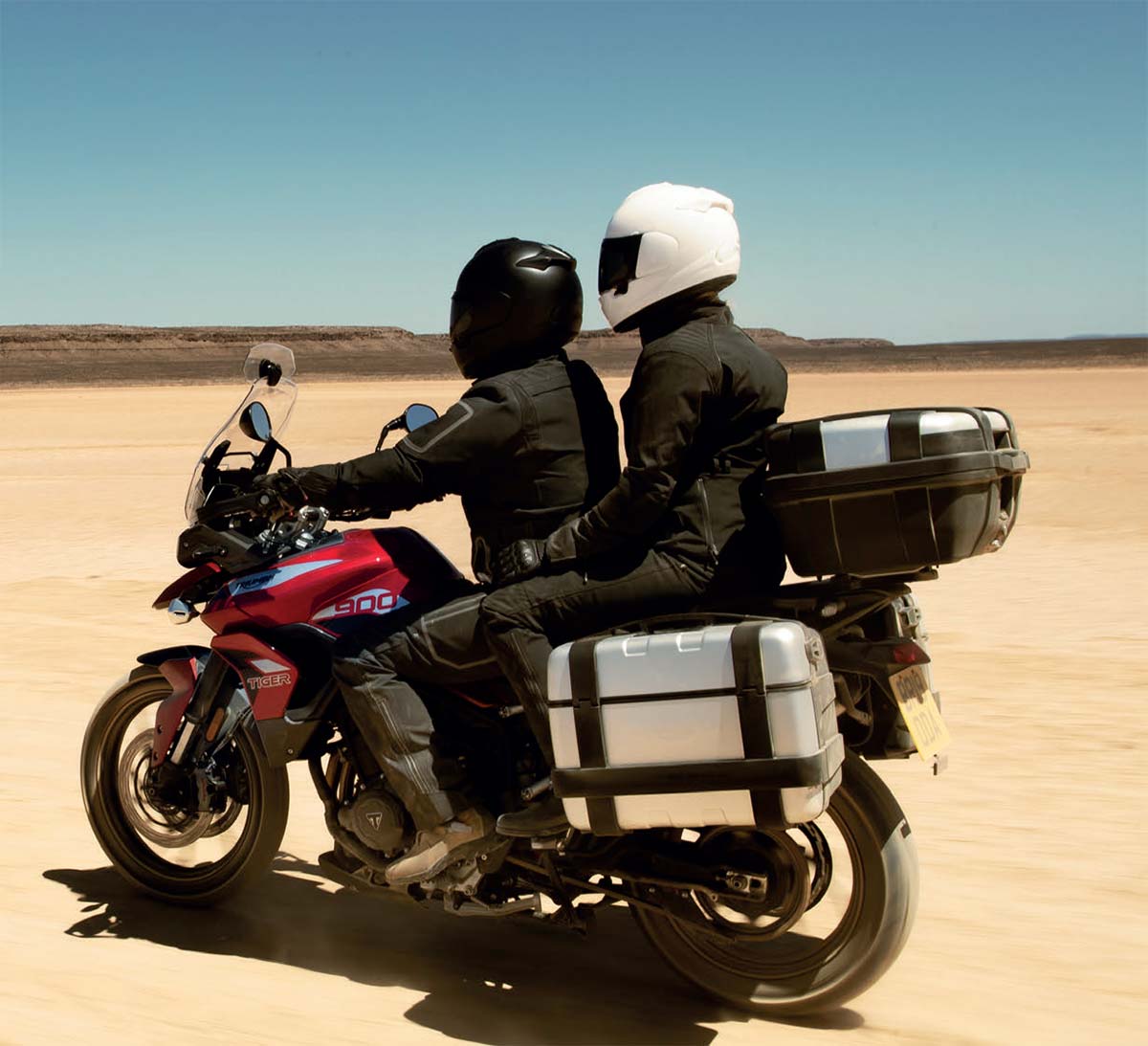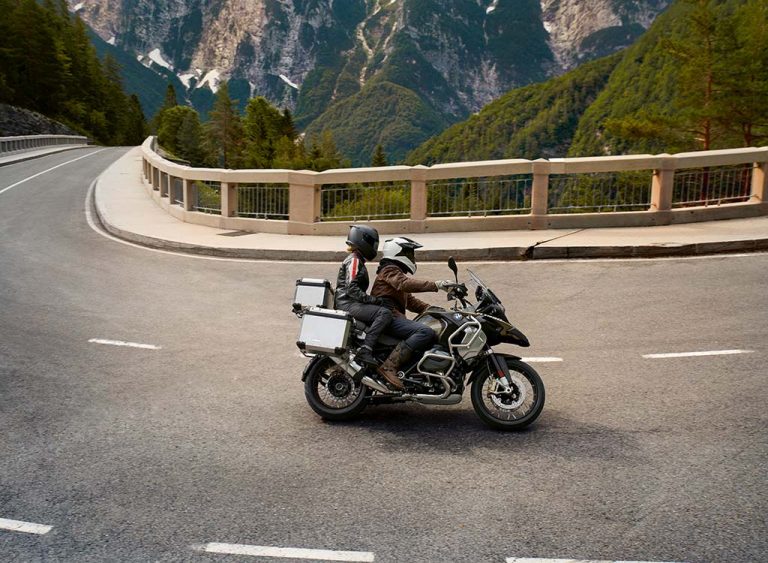Sharing your passion for motorcycling with your better half can be a joyous experience, but with it comes a huge responsibility. Misti Hurst explains how you and your pillion can ride in perfect harmony
Taking a passenger on the back of your bike is a big deal. You are now responsible for that person’s wellbeing. They have trusted you with their life so you’d better do everything in your power to take care of it. But, before your passenger steps onto a footpeg, there are a number of checks you should make to ensure your motorcycle is ready for a pillion passenger.
Firstly, make sure the bike’s suspension is set up for the combined weight of the rider, pillion, and any luggage or gear that you might have.
Get this wrong and the extra weight at the rear of the bike can make the front end feel light and vague while steering. You also risk bottoming out the suspension if you don’t adjust it.
In fact, it’s always a good idea to do a quick health check of your bike before you set off to make certain everything is in good working order, such as checking your brakes, lights, and tyre treads.

All the gear
It’s important to ensure your passenger is wearing proper riding gear even if you have to give them your own jacket or gloves, although this isn’t an ideal situation to be in. It infuriates me when I see a rider all decked out in leathers, boots and gloves, while their passenger is on the back in shorts and a T-shirt.
Your passenger should also be wearing good quality gear including a motorcycle jacket, trousers, boots and gloves, as well as helmet that fits properly and meets your country’s regulations.
Buying a cheap helmet in a large size just so you have an extra one lying around is not going to be any good for a passenger with a small head if you crash. Helmets need to fit snugly and properly for both rider and pillion.
Learning the ropes
Before you take a passenger on your bike for the first time, it’s important to educate them about being a pillion rider. Tell them where to put their hands and feet and where the hot surfaces are (I’ve been burnt on an exhaust before).
Also explain how to safely and smoothly get on and off the bike without the both of you tipping over, and tell them to make sure that you are ready before they climb aboard or dismount. A little pat on the seat to indicate he or she can get on can be a helpful way to communicate.
Teaching your passenger how to hold onto the motorcycle when you are riding is very important. Their options are either to take hold of the grab rails or to use your waist. Either gives them something solid to push against under braking when their body tends to slide forward. It also ensures they don’t jerk back under hard acceleration either.
Make sure you explain that they should never hold onto your shoulders or arms because that will interfere with your ability to steer the bike.
Come up with some basic hand signals so you can communicate while riding and be sure to check in with your passenger regularly to see how they are doing. Thumbs up or down is super easy, or if you are planning on doing a lot of riding with a pillion, investing in a helmet-to-helmet communication system is a good idea.
Adapt your riding style
When you ride with a passenger your bike will be heavier and it will steer and manoeuvre differently, so take the time to learn the new characteristics. You’ll need to be smoother with all your inputs such as rolling on and off the throttle, applying and releasing the brakes, gear shifting, and steering. If you’re too jerky, you’ll be bonking helmets the entire ride.
Explain to your passenger that the best thing they can do while on a motorcycle is to remain relaxed and neutral and to go with the bike. Doing so is going to make the motorcycle handle and perform at its best and it is important that your passenger knows this. Tell them to look over your inside shoulder in a corner and not to lean away from the bike or fight against which way you’re leaning. And certainly, make sure they know not to make any sudden movements.
Learn about the bike
To help your passenger feel more comfortable, and to prevent them from tensing up in situations that are out of the ordinary, talk to them about how the motorcycle works. Show them how you steer the bike and how it leans into a turn. Tell them what you are looking at when you ride through a corner, and teach them how to look far ahead into a corner and not to target fixate on things they are nervous about. Show them how you roll on the gas in a corner and how you shift gears, and then talk about the different situations that could come up that would require sudden or unexpected actions.
An excellent way of helping your passenger stay relaxed on the bike in all situations is to practice making emergency stops and sudden avoidance manoeuvres in a car park before heading out for a long ride. Then ride some tight turns and longer sweeping bends so your passenger can work on going with the bike. After all, pillion riders should try and become one with the motorcycle and rider, as if they aren’t even there at all.
Practise makes perfect
The more you practise together, the better you will be able to read each other and work together as a team. In my work as a motorcycle instructor, I always talk about educating the rider and how practise makes perfect. The same certainly holds true for two-up riding. Educate your passenger and practise together so that you both know what to expect on the road. That way, sudden manoeuvres won’t seem so sudden and you’ll know how to communicate together effectively. This will increase the enjoyment of riding for both of you.
It is an amazing feeling when two people on a motorcycle are able to metamorphosis from rider and passenger into a unified team. Follow this advice and prepare for some very happy two-up travels throughout the world.

